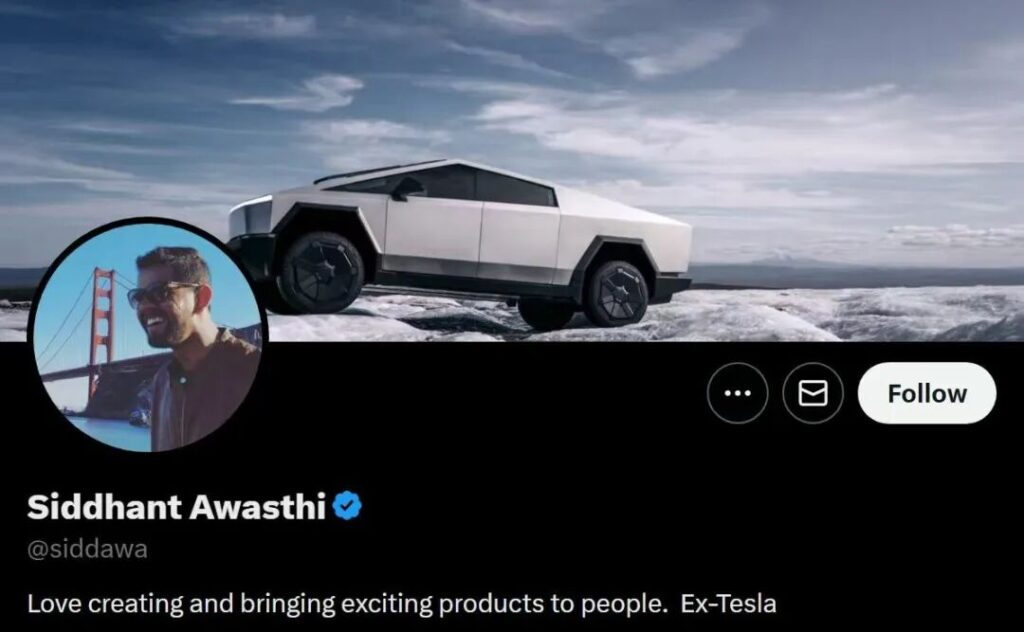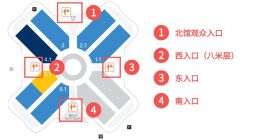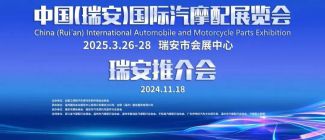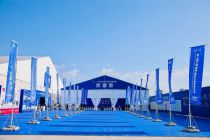Scan QRCode

In just one day, Tesla lost two executives in succession. According to foreign media reports, Siddhant Awasthi, the project leader of Tesla Cybertruck, announced earlier this month that he will be resigning after more than 8 years at the company. Within Tesla, he is still the core leader of the Model 3 project. A few hours after Awasti announced his departure from the company, Emmanuel Lamacchia, the project manager of the best-selling Model Y, also officially announced his departure from Tesla.

At this point, Model 3, Model Y, and Cybertruck have all lost their core managers. According to Reuters analysis, the recent departure of several key executives from Tesla is partly due to the company's strategic shift towards artificial intelligence, and partly due to the unclear prospects of some of its automotive businesses. In recent years, Tesla has experienced a continuous outflow of core talents, especially executives in key areas such as intelligent driving and automotive production, who have left Tesla, started their own businesses, or joined other car companies to become independent new leaders. Within a day, Awasti announced the loss of two "soul figures" on his social media platform. In his blog post, he said, "After going through an extraordinary career journey, I have recently made one of the most difficult decisions of my life - to leave Tesla." According to LinkedIn data, Awasti initially started his Tesla career as an intern and has been working at Tesla ever since. Recently, he has been mainly responsible for coordinating the Cybertruck project in the company, overseeing the entire process from the engineering phase to large-scale production, and leading product strategy, quality improvement, and supply chain management.

From this, it can be seen that Awasti played a key role in the launch of Cybertruck. Within the company, he officially took over the leadership of the Model 3 project in July last year. He recently posted on LinkedIn thanking Tesla for nurturing his career - 'When I first joined the company as an intern eight years ago, I never thought that one day I would be able to lead an important project like Cybertruck and turn it into reality.'. ”On the same day that Awasti officially announced his resignation, Model Y project leader Ramachia also announced his departure to the public. Ramachiya joined Tesla in 2018 and prior to that, he was responsible for engine production and other work at Rolls Royce. During his more than four years at Tesla, he has been overseeing the Model Y project and managing its production. Like Avasti, Ramachiya also bid farewell to Tesla on his LinkedIn account, writing, "What a wonderful journey... from leading the introduction of new products (NPI) for Model 3 and Model Y, to becoming the automotive project leader for the world's best-selling car, Model Y

In his opinion, the global production of the all-new Model Y can be considered a highlight of his career. The team completed the production line conversion across three continents and four major factories in just two weeks, creating an unprecedented feat in the automotive industry. The departure of the two manufacturing elites is probably something Musk does not want to see. In fact, in just one year, the leadership of Tesla's automotive business has gradually "fallen apart". Before the departure of Ramachia and Awasti, the company had already lost several project managers, including David Zhang for the Model S and Model X projects, and Daniel Ho for the Model 3 project. According to reports, Daniel He has a high reputation within the company and was previously praised by the industry for successfully leading Tesla's first mass-produced electric vehicle, the Model 3. However, as part of Tesla's massive layoffs last year, he was fired by Musk and subsequently joined the autonomous driving company Waymo. David Zhang has been leading the Model S and Model X projects at Tesla since 2018. Before the projects were handed over to Ramachia and Awasti respectively, he personally led the Model Y and Cybertruck projects. During his final tenure at Tesla, he was also responsible for the company's first mass-produced electric convertible sports car, Roadsters, and other long-term projects. In August of this year, Peter Bannon, Vice President of Hardware Design Engineering at Tesla, was reportedly fired. He was the head of the company's Dojo supercomputer team and had previously worked at Apple, where he was involved in the processor design of the iPhone from A5 to A9. Prior to Pete Bannon, Milan Kovac, the project leader for the Optimus Prime humanoid robot, had already resigned. According to public information, in June of this year, Omead Afshar, the Vice President who has long been trusted by Musk, also left Tesla. The Cybertruck dilemma has intensified, and various signs since the beginning of this year indicate that the future of the project, which was once highly anticipated by the industry, has been shrouded in uncertainty. As the leader of the Cybertruck project, Avasti was tasked with transforming concept cars into mass production reality. In LinkedIn's farewell letter, Avasti thanked company founder Elon Musk and his team colleagues, mentioning his pride in the increased production of Model 3, the launch of the Shanghai Gigafactory, and the achievement of Cybertruck mass production, but did not disclose the reason for his resignation and future plans. Similarly, he did not mention any practical issues such as internal pressure within Tesla, backlog of new car inventory, and lowered sales targets. What we can see is that Awasti's resignation comes at a critical moment when Tesla's pickup truck dream is facing a cold reality - in the third quarter of this year, Cybertruck sales in the United States plummeted by about 63% year-on-year, with only about 5400 units. This number, compared to the once claimed annual sales of 250000 vehicles, can be considered a cliff like decline. At the same time, there have been frequent large-scale recalls of Cybertrucks. In March of this year, Tesla recalled over 46000 Cybertrucks due to the risk of their body panels falling off due to defects in the adhesive used. The recall volume of 46000 vehicles also represents the total production of Cybertrucks since commercial production began in November 2023. In October, Tesla recalled nearly 6200 Cybertrucks again due to the front parking lights being too bright, which did not comply with regulations. In fact, just in 2024, Tesla conducted up to 7 recalls of Cybertrucks due to issues such as tire pressure monitoring system failures, stuck accelerator pedals, and delayed inverters. Starting this year, Cybertruck inventory pressure has gradually become prominent, with Tesla showrooms quietly offering thousands of dollars in discounts in the US market. In Tesla's automotive business segment, Cybertrucks have become a manufacturing and financial burden for the company. Tesla has always been proud of its speed and scale advantage in new car production, but when the previous hot selling trend was replaced by price reductions, inventory clearance, and storage, this positive narrative has already broken. Globally, Cybertrucks still attract attention, but the harsh reality of scale, cost, and market demand has repeatedly challenged Musk's pickup truck ambitions. In the eyes of industry insiders, the current Cybertruck project is more like a high cost experiment with unresolved flaws: excessive weight, limited range, and hidden market demand hidden behind the futuristic design... Cybertruck, which was supposed to expand Tesla's profit moat and become a weapon to seize the most profitable luxury pickup truck market segment of competitors such as Ford and General Motors, is now accelerating to become a touchstone for testing Musk's commitment limits. Avasti's resignation also reflects the fatigue of Tesla's senior management. The loss of confidence in management has now become another new narrative for Tesla. Musk once personally defined Tesla's corporate culture and principles of "rapid innovation," but ironically, at critical junctures when businesses such as automobiles are under pressure, this principle is facing the risk of being replaced by "exhaustion.
AMS2024 Exhibition Guide | Comprehensive Exhibition Guide, Don't Miss the Exciting Events Online and Offline
Notice on Holding the Rui'an Promotion Conference for the 2025 China (Rui'an) International Automobile and Motorcycle Parts Exhibition
On September 5th, we invite you to join us at the Wenzhou Auto Parts Exhibition on a journey to trace the origin of the Auto Parts City, as per the invitation from the purchaser!
Hot Booking | AAPEX 2024- Professional Exhibition Channel for Entering the North American Auto Parts Market
The wind is just right, Qianchuan Hui! Looking forward to working with you at the 2024 Wenzhou Auto Parts Exhibition and composing a new chapter!
Live up to Shaohua | Wenzhou Auto Parts Exhibition, these wonderful moments are worth remembering!
Free support line!
Email Support!
Working Days/Hours!





